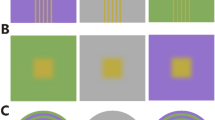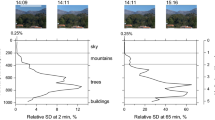Abstract
I HAVE once or twice been asked why photographs are apt to show a line or band or edging along the boundary of a bright and dark region. My assistant, Mr. E. E. Robinson, has thought of the reason, and it may be convenient to publish it. In a developed film the exposed portion perceptibly differs in thickness from the unacted-on portion, and accordingly the linear boundary of two contrasted regions may sometimes act as a cylindrical lens, and during printing either concentrate of disperse the light on the positive immediately beneath it.
This is a preview of subscription content, access via your institution
Access options
Subscribe to this journal
Receive 51 print issues and online access
$199.00 per year
only $3.90 per issue
Buy this article
- Purchase on SpringerLink
- Instant access to full article PDF
Prices may be subject to local taxes which are calculated during checkout
Similar content being viewed by others
Rights and permissions
About this article
Cite this article
LODGE, O. Border occasionally seen between Light and Dark Regions on Photographic Prints. Nature 73, 5 (1905). https://doi.org/10.1038/073005c0
Issue Date:
DOI: https://doi.org/10.1038/073005c0



